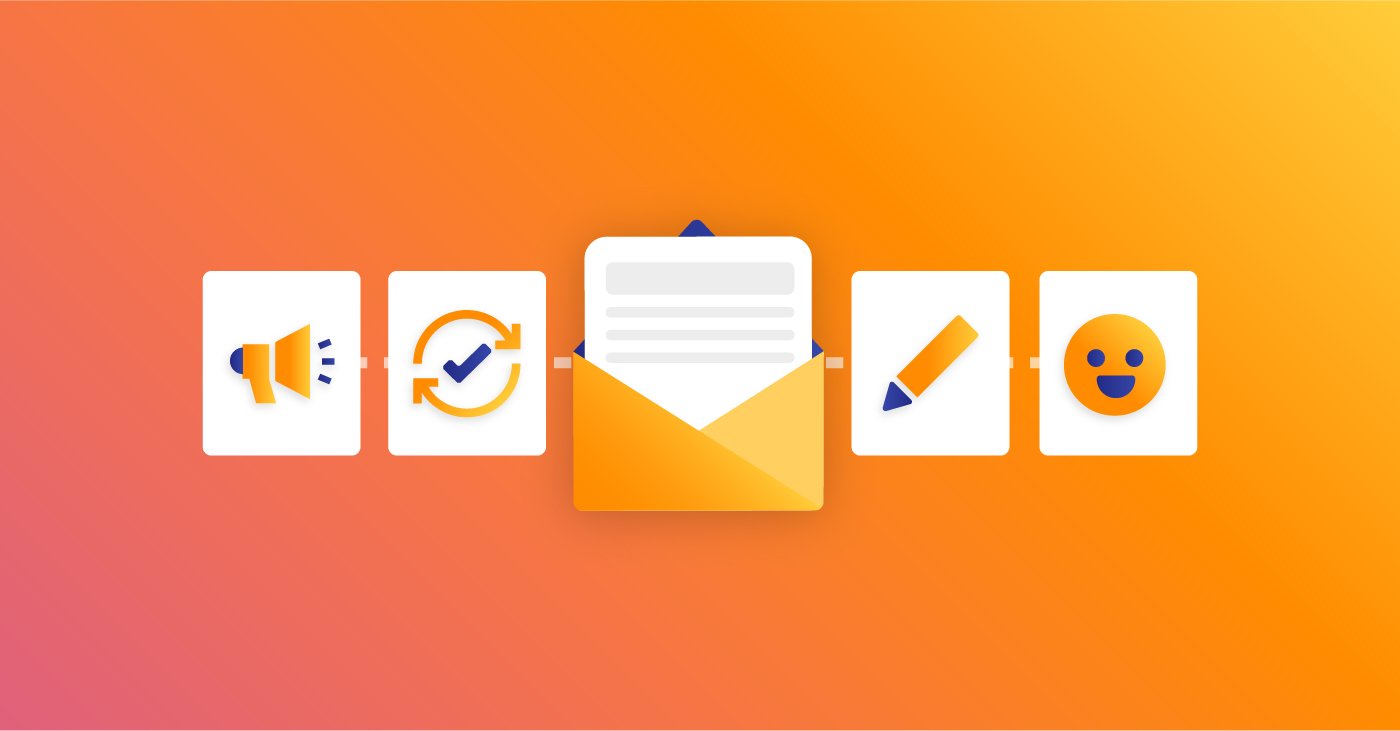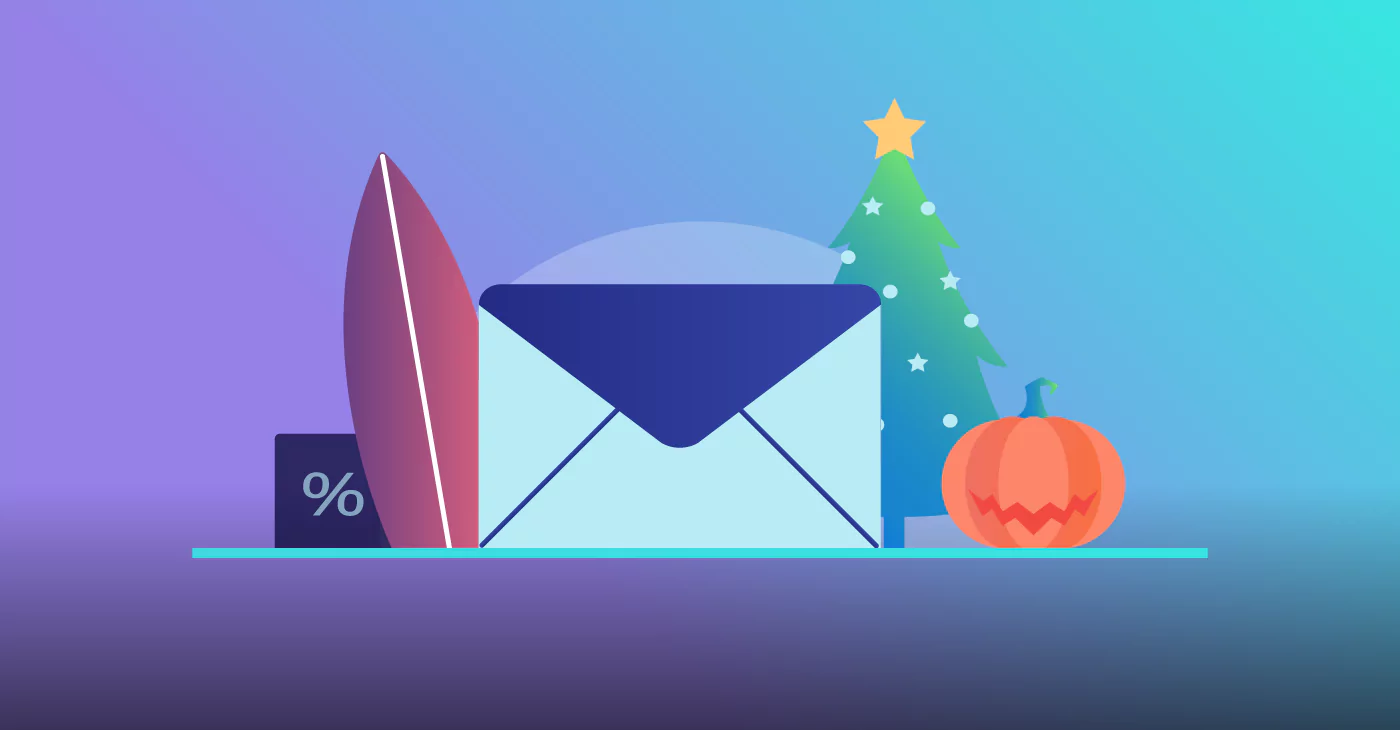
Building a large email list is an important part of email marketing, but it’s only the first step — you need your subscribers to open and read your emails too. Are you crafting great emails, but having trouble getting your subscribers to open them? The good news is that you can re-engage your subscribers by following a few simple steps.
According to Adobe, the average office worker spends five hours a day opening emails. In order to capitalize on this, it’s important to make sure your followers trust the value your emails will provide. Study your consumer demographics and target your list with content that appeals to them.
Let’s cover some of the indicators as to why people may not be opening your emails.
Apple’s iOS 15 Update
The iOS 15 update puts privacy controls front and center for Apple and Apple Mail users. One of the major features that iOS 15 provides is that it allows users to mask their IP address so that marketers cannot access whether or not their opening emails (and where they’re opening emails from). Granted, users have to opt in to these features and be an Apple and Apple Mail user, but that doesn’t mean other email providers, like Gmail, may not offer something similar in the future.
If this makes you unsure of how you’re going to track the success of your email marketing, make sure you look into other email KPIs you should be tracking.
Low Click-Through Rate
If you’re noticing your click-through rate has taken a nose-dive, or is steadily declining, it could be because your emails aren’t getting as many opens as they once were.
Think about it: if your emails aren’t getting opened, then they aren’t going to get any clicks, either.
High Bounce Rate
Your bounce rate tells you out of all the emails you send, which never made it to the inbox. This issue typically has something to do with the email address you’re sending your emails to, but that doesn’t mean it still isn’t a problem. You don’t want to experience a high bounce rate because essentially, those are wasted emails that your subscribers never see.
Compromised Deliverability
There are tons of issues that could affect your deliverability, and you’ll want to do what you can to avoid each one. If you let these issues go unnoticed for too long, you’ll not only stop getting your emails to the inbox but you could get blacklisted, which will label you as spam and make it harder for you to improve your deliverability over time.
And we probably don’t have to say it, but if your deliverability is low, then your email open rate will be negatively affected as well.
Experiencing a low open rate is very discouraging. But the good news is that you can combat it. All you need are some creative ways to convince your subscribers to open your emails.
Focus on Building an Engaged List
Take stock of who’s on your email list and how they got there. Are they interested in your products? Are they clicking on your educational links? Look at your data and study what’s working, then try to do more of that. If they subscribe to the products, send a follow-up email with a coupon code for a product they’re interested in to engage them. If they want to learn more about the services your business provides, why not send out a newsletter with helpful introductory links?
Make sure that everyone on your list has opted into getting emails from your business, otherwise you may struggle with open rates. People don’t open emails from a brand they don’t know anything about, or even worse if they feel like they were duped into subscribing. In fact, if you live in the European Union, where GDPR was passed in 2018, you could face legal consequences for adding subscribers to your list without their consent.
If your email marketing tool provides analytics on subscribers who aren’t engaging with your emails, consider segmenting your list to filter out those subscribers from the ones who consistently open your emails. Run a special campaign to re-engage the subscribers you’re at risk of losing. If they still don’t interact with you, consider removing them from your list. Think quality, not quantity.
Make Your Subject Lines Eye-catching
According to Adobe’s survey, office workers found only a quarter of emails from brands interesting enough to open. This is why it’s important to write email subject lines that are brief and catchy. Instead of saying “Check out our new sale,” keep it casual and specific with something like “25% off everything on your love list!” Try asking your subscribers a question in the subject line or enticing them with a deal or discount code that’s exclusive to the newsletter.
To find out more about what interests your followers, run a couple of A/B tests to see which subject lines land best with your subscriber base. And remember to keep your subject line under 50 words, so it doesn’t get cut off and cause confusion.
Tap Into the Buyer’s Journey
Think about the process you go through when you get emails from brands. Do any of them stick out to you? Was there one that you were more willing to click to open versus another that you ignored immediately? Now take a look at your customer data to see what’s resonating with them. Does it align with your personal experience, and if so, how can you leverage that alignment to ensure that your emails are serving their needs?
It’s important to keep an average profile, or buyer persona, of your subscriber — who are you trying to reach and why? What’s their background, and where are they based? Are they more likely to buy from an eCommerce site, or do they prefer to go into a retail store? Understanding these kinds of details will help you target your emails more effectively.
Personalize Your Emails
It’s no secret that people are more likely to open emails if you address them by their name. If your email marketing software has personalization capabilities, make the first name of individuals appear in the subject line of your email. “Lisa, get in on our weekend-only 15% discount!” is more effective than “Check out our new 15%-off promotion.” Create some urgency by setting a deadline for the promotion.
25% of Adobe’s respondents stated that the most annoying thing about getting emails from brands is that “Marketers’ data about me is wrong.” This points to the importance of making sure that when you reach out to consumers via a newsletter, you have the right data. You wouldn’t want to send out a special birthday promotion with either an expired code or the wrong birthdate on it.
Marina Retziou from Moosend says, “Things like a catchy subject line and perfect timing can always do the work, but what you always need to keep in mind is your audience and their preferences. A catchy subject line for the gaming industry is not the same for finance or hospitality. There is no one-size-fits-all solution; a personalized message and a segmented list will always do the trick.”
Want to make sure your emails don’t go unopened? Create some urgency and grab your customers’ attention by writing catchy, fun subject lines. Keep tracking data on what subject lines perform best with your list; experiment and have fun!






